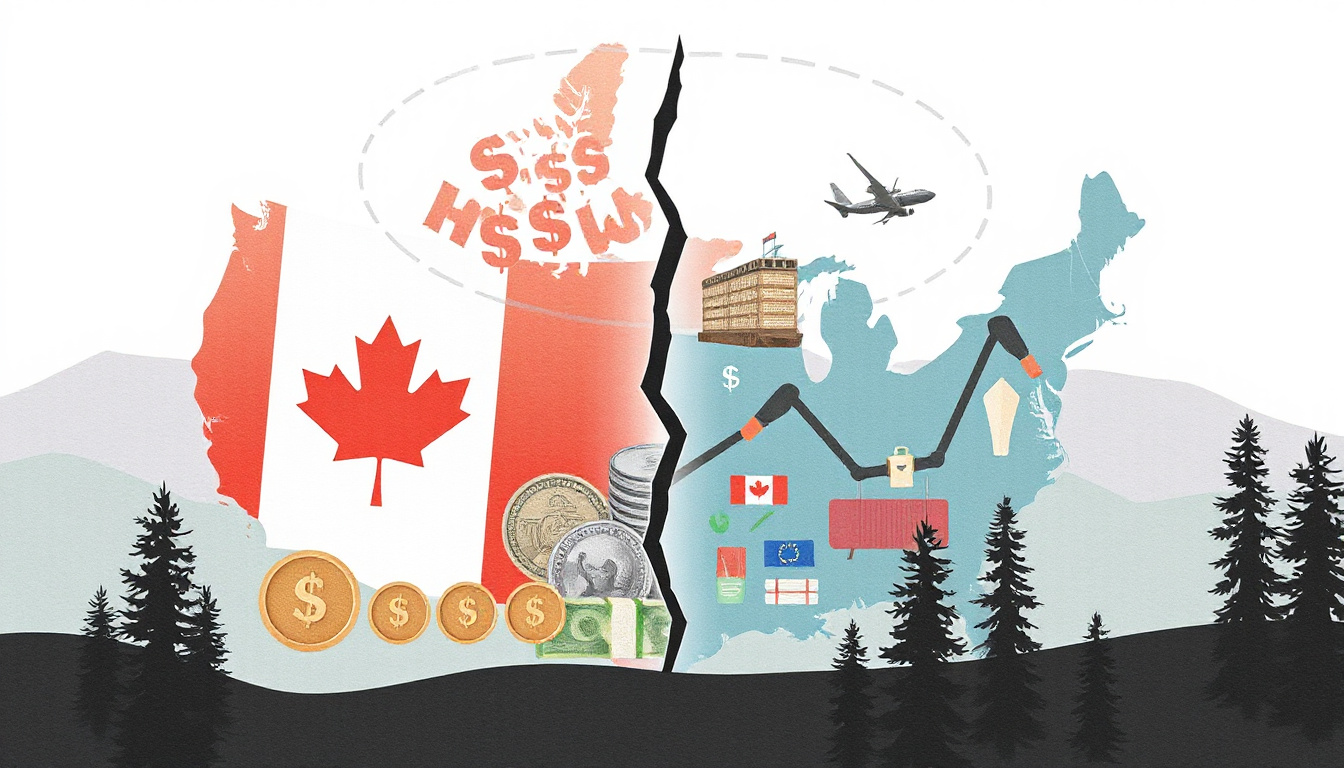Trump’s trade policies have had a ripple effect on global economics, particularly impacting Canada. With its close economic ties to the United States, Canada has felt the consequences of tariffs and trade negotiations. This article explores how these policies have influenced the rising debt in Canada, providing an insightful overview, analyzing the economic impacts, and looking at future relations. Join us as we delve into the intersection of trade and debt, and how these factors play a critical role in the financial landscape for both Canadian consumers and businesses.

Key Takeaways
- Trump’s trade policies significantly influenced tariffs affecting Canadian imports and exports.
- Increased tariffs led to higher costs for Canadian businesses, contributing to national debt.
- The correlation between U.S. trade policies and Canada’s rising debt highlights the interconnectedness of economies.
- Future trade relations between Canada and the U.S. will be critical in addressing Canadian debt levels.
- Understanding these trade dynamics is essential for Canadians to navigate economic challenges ahead.
Understanding Trump’s Trade Policies: An Overview
Understanding Trump’s Trade Policies: An Overview
In recent years, the trade policies implemented by former U.S. President Donald Trump have significantly influenced international trade dynamics, impacting economies globally, including Canada. Trump’s administration took a protectionist approach, prioritizing ‘America First’ principles that aimed to reduce trade deficits and foster domestic manufacturing. This involved renegotiating NAFTA into the USMCA, imposing tariffs on numerous goods—particularly steel and aluminum from Canada—and advocating for bilateral trade agreements. While intended to bolster the American economy, Trump’s trade policies have created ripples in the Canadian economy, leading to increased costs for businesses and consumers alike. Particularly, the tariffs raised prices on imported goods, affecting consumer spending power and further straining the financial well-being of Canadians. As a result, many individuals and businesses in Canada have experienced rising costs and, consequently, increased reliance on credit, contributing to overall rising debt levels. Understanding these policies is critical as they serve as hidden factors behind current economic challenges facing Canadians, indicating how international policy decisions can create domestic financial pressures.
The Impact of Tariffs on Canadian Economy
## The Impact of Tariffs on Canadian Economy
The tariffs introduced during Donald Trump’s presidency have had significant repercussions on the Canadian economy. These tariffs were primarily levied against Canadian steel and aluminium, which resulted in retaliatory measures from the Canadian government in an effort to protect its domestic industries. This tit-for-tat created a ripple effect, raising the cost of goods and services across various sectors in Canada. As businesses faced increased costs due to tariffs, many passed these expenses onto consumers, leading to higher prices for everyday items. In addition, Canadian manufacturers experienced decreased competitiveness in the U.S. market, prompting some to reduce production or lay off workers.
This environment contributed to a rise in household debt, as consumers relied increasingly on credit to maintain their purchasing power amidst rising prices. The situation also placed additional strain on Canadian businesses, many of which struggled with their own debts due to decreased sales and higher operational costs. Consequently, the tariffs linked to Trump’s trade policies represent a critical factor in examining the broader picture of rising Canadian debt.
‘Trade is a zero-sum game; one nation’s gain is another nation’s loss.’ – Peter Navarro

Debt Increase: Analyzing the Correlation with Trade Policies
When examining the underlying factors contributing to rising Canadian debt, Trump’s trade policies emerge as a significant, yet often overlooked, element. These policies, particularly those implemented during his administration, were aimed at renegotiating trade agreements and imposing tariffs on various imports and exports. For Canada, a nation heavily reliant on trade, the impact was multifaceted.
The introduction of tariffs on steel and aluminum, for instance, not only affected Canadian manufacturers directly but also led to higher input costs, which translated into increased pricing for consumers. As businesses faced these slumping profit margins, many resorted to borrowing to maintain operations and invest in mitigating the impact of the tariffs. This led to a rise in corporate debt, which consequently seeped into personal debt levels as employees were either laid off or experienced wage stagnation.
Moreover, the uncertainty surrounding trade agreements during Trump’s tenure created a hesitancy amongst businesses to invest in expansion or new ventures. This economic stagnation can contribute to rising debt levels as individuals may find themselves reliant on credit to manage their finances under less favourable economic conditions. Thus, Canadian consumers and businesses must navigate the complexities of both local economic policies and external trade relationships. Understanding this correlation between Trump’s trade policies and rising Canadian debt is critical to addressing financial challenges and making informed economic decisions.
Future Outlook: Canada’s Debt and Trade Relations with the U.S.
In examining the intricate relationship between Canada and the United States, one cannot ignore the impact of Trump’s trade policies on Canada’s economic landscape and, consequently, its rising debt levels. During Donald Trump’s administration, several trade initiatives were implemented that profoundly altered the dynamics of cross-border commerce. Tariffs imposed on Canadian goods, notably in sectors like lumber and steel, not only strained the trade relationship but also led to increased costs for Canadian manufacturers. As these tariffs inflated production costs, businesses passed on these expenses to consumers, leading to higher prices and reduced consumer spending power.
The subsequent economic strain on households and small businesses has resulted in increased borrowing as Canadians strive to maintain their financial stability and consumer habits. This, in turn, has contributed significantly to the rising levels of household debt across the country. Furthermore, the uncertainty of trade agreements kept businesses on edge, prompting them to borrow more in anticipation of fluctuating trade conditions. Therefore, as Canada navigates its debt crisis, it must consider how external political factors, like Trump’s trade policies, played a pivotal role in shaping its current economic scenario.
Frequently Asked Questions
What are Trump’s trade policies and how do they affect Canada?
Trump’s trade policies primarily focused on imposing tariffs on various goods, including those imported from Canada. These tariffs can increase costs for Canadian businesses that rely on U.S. exports, potentially leading to economic strain.
What specific tariffs have been implemented that impact the Canadian economy?
Notable tariffs include those on steel and aluminum imports, as well as measures affecting various agricultural products. These tariffs can result in retaliatory measures from Canada, exacerbating trade tensions.
How has Canadian debt been affected by these trade policies?
The rising debt in Canada can be partially attributed to the economic disruptions caused by these trade policies. Increased costs and decreased demand from the U.S. market can lead to lower revenues for Canadian businesses, contributing to higher national debt as the government seeks to stimulate the economy.
Is there a direct correlation between Trump’s trade policies and the rise in Canadian debt?
While there is a correlation suggested by economic analyses, it is not solely due to Trump’s trade policies. Other factors, such as domestic economic management and global market conditions, also play significant roles in Canada’s debt situation.
What does the future look like for Canada’s debt and trade relations with the U.S.?
The future of Canada’s debt and trade relations is uncertain and will largely depend on changes in U.S. trade policies, global economic conditions, and Canada’s own economic strategies. Continuous monitoring and strategic adaptations will be essential for Canada to manage its debt effectively.
